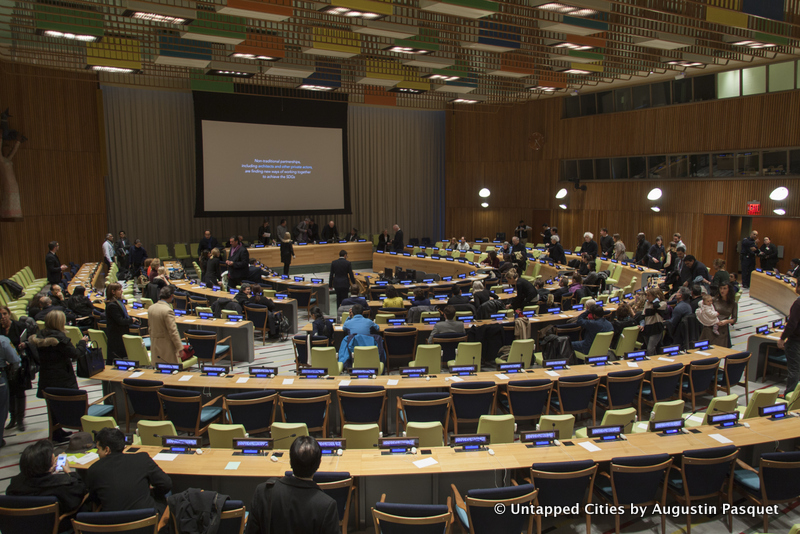
On Tuesday evening, we attended a special event inside the United Nations Trusteeship Council Chamber hosted by the Pritzker Architecture Prize and the Sustainable Development Goals Fund. Originally to have also incuded the recently passed Zaha Hadid, the evening was a panel discussion with 2016 Pritzker Prize winner Alejandro Aravena and six previous winners of the prize: Jean Nouvel, Richard Rogers, Renzo Piano, Christian de Portzamparc, Wang Shu, and Glen Mercutt. At stake was the simple question: What are the challenges for the built environment? The answers and discussion led to many other areas within the field of architecture and urbanism.
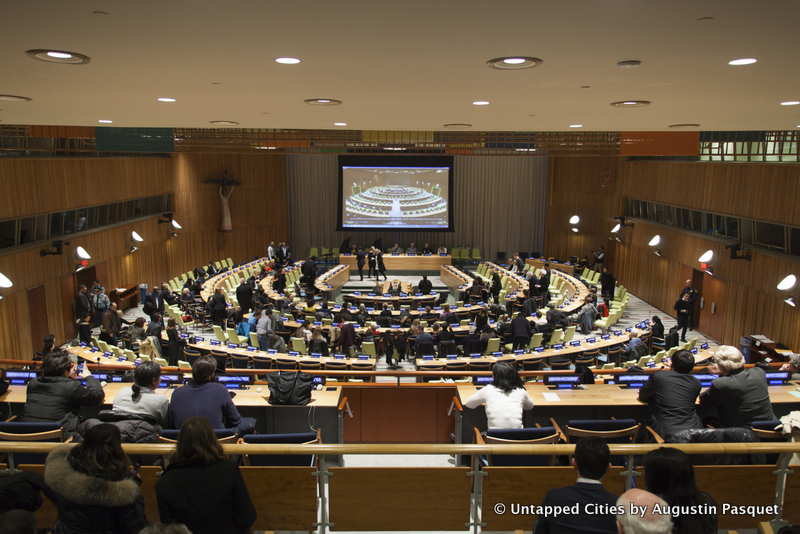
But first, it is important to discuss the history of the Mad Men-esque Trusteeship Council Chamber in the United Nations. The Trusteeship Council itself has been suspended since November of 1994, because its primary purpose when formed in 1945 was to handle decolonization and management of eleven trust territories – places that were former colonies (often mandates under the League of Nations) or places handed over by defeated countries after World War II. The goal was to achieve self-governance and independence for these territories. There were five nation members of the council: China, France, the Russian Federation, the United Kingdom and the United States.
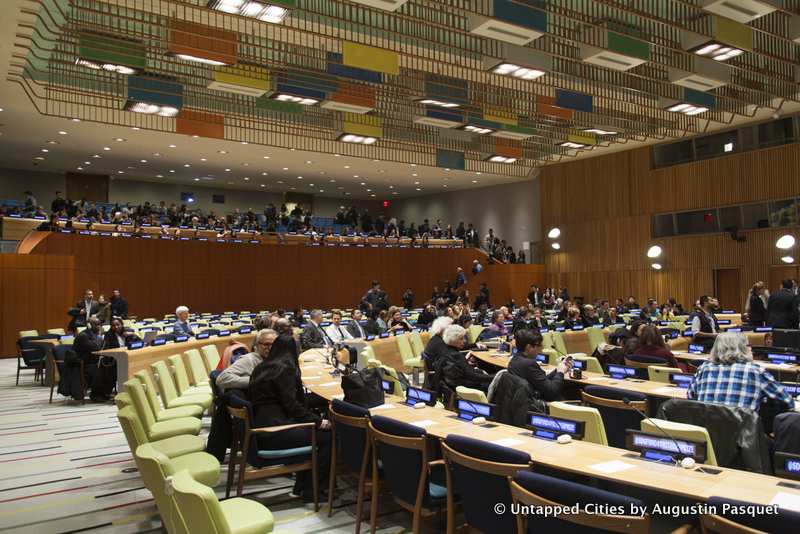
The council formally ended activity upon the independence of the nation of Palau, although the body still exists in the United Nations charter. As the United Nations website describes, “By a resolution adopted on 25 May 1994, the Council amended its rules of procedure to drop the obligation to meet annually and agreed to meet as occasion required – by its decision or the decision of its President, or at the request of a majority of its members or the General Assembly or the Security Council.”
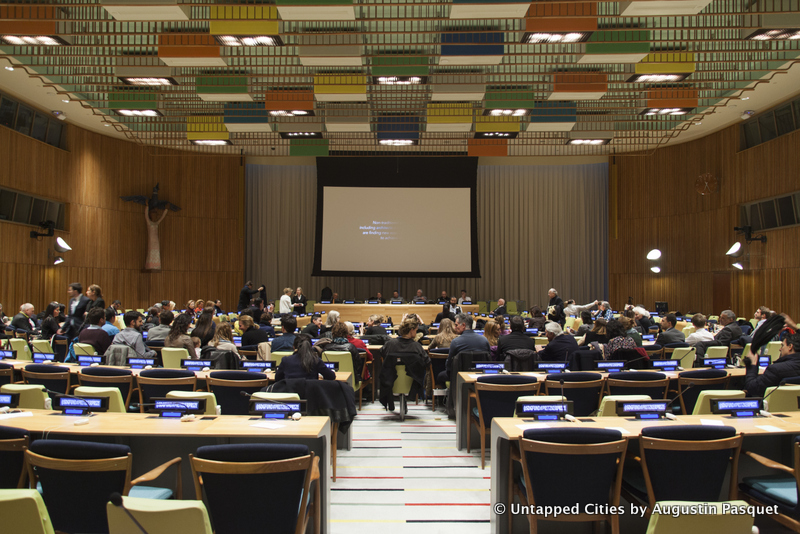
The Trusteeship Council Chamber dates to 1952, in a design by Danish architect Finn Juhl. In 2013, after a three-year renovation, the chamber re-opened and currently hosts a variety of activities, including this week’s architecture panel. The interior design work was managed by both the United Nations and the Government of Denmark, and new furniture was added by Danish designers Kasper Salto and Thomas Sigsgaard. Colorful blocks in the ceiling, some which have lights, are mirrored in color on the carpeted floor below. In the front of the room, a female statue designed by Danish sculptor Henri Starcke is meant to symbolize Mankind and Hope.
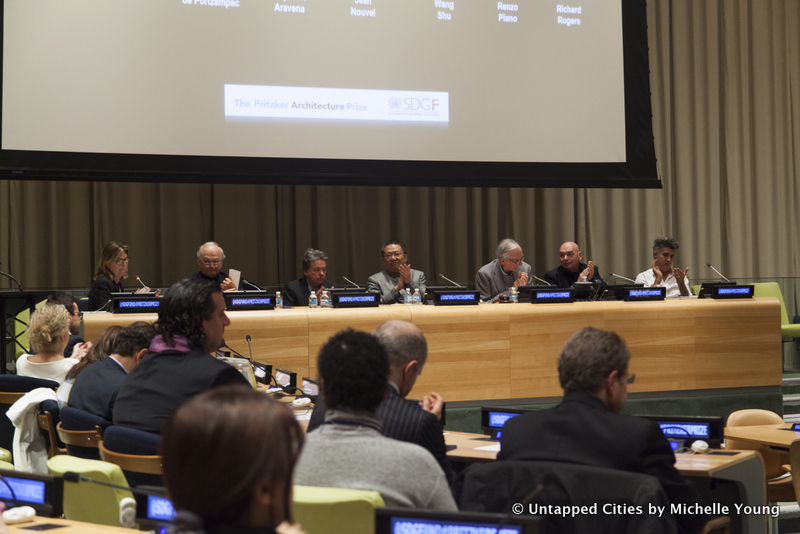
The conversation itself with the Pritzer Prize-winning architects was a sobering one, reflecting the many challenges ahead not only for sustainable development, but livability, social equality, and the provision of basic human needs. Richard Rogers urged that the built environment should be seen as important as health or education or food and feared that the architect has become a mere decorator. He advocated for a new way of looking at architecture – teaching and practicing it with the acknowledgement that the field necessarily requires collaboration with other experts. Renzo Piano had an analogous opinion, that the “architecture profession is a civic art. You must know how to do things,” to be able to build and to be a civic poet.
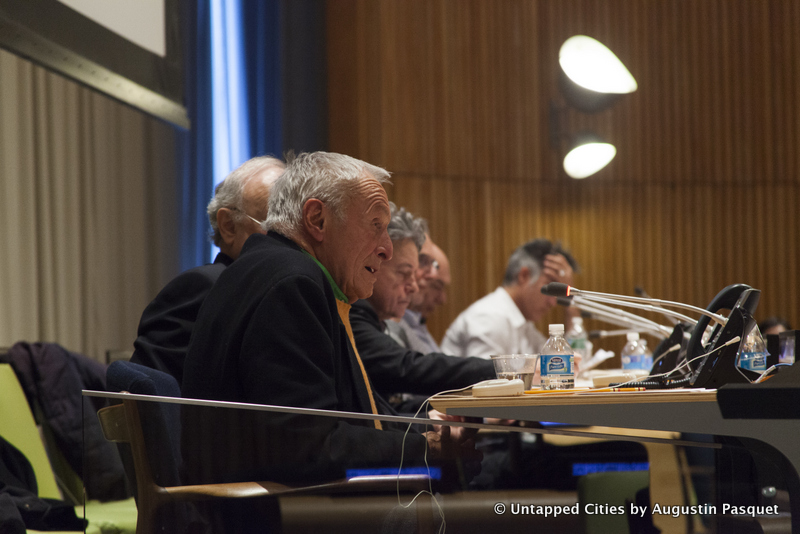 Architect Richard Rodgers
Architect Richard Rodgers
This idea of poetry was at the top of Piano’s agenda: “We have a bad need for beauty, for poetry in this world.” Like Rogers, he found much of architecture today “cosmetic,” likening it to “lipstick on a pig.” He emphasized the link in the Italian language between the words city and civilization (città vs. civiltà). We need to try to save the cities, he urged, make them better places to stay and live, to make them places of tolerance and to see diversity as a great opportunity, not a problem. Australian architect Glen Mercutt similarly finds that “the real issue is fear,” and urges inclusive architecture that can speak to the positive effects of the great migration taking place globally.
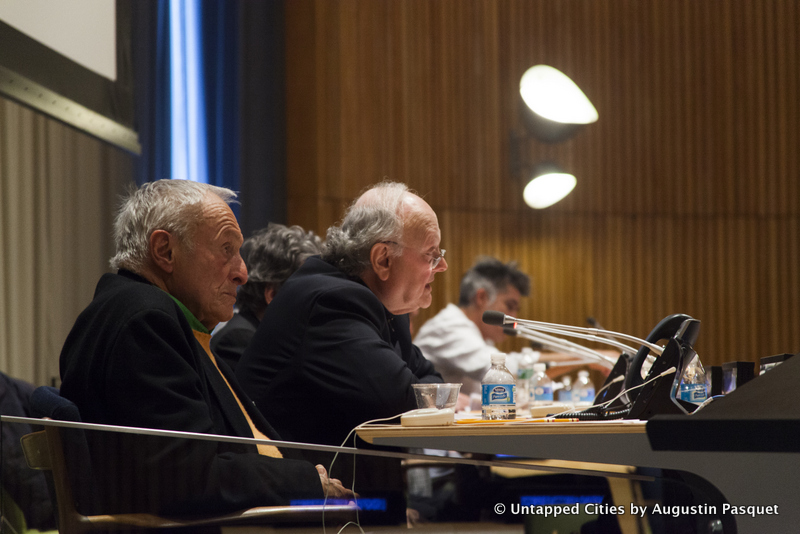 Architect Glenn Mercutt
Architect Glenn Mercutt
Both Piano and Christian de Portzamparc spoke of the problems in the periphery of urban centers, no doubt the banlieues of Paris were both foremost in their minds as both architects have offices in the French capital. But Piano also reminded us that fragments of the periphery can exist within the center of cities as well, like a disused parking lot. Portzamparc had a social agenda, believing we have a responsibility to the suburbs and that good public space is a “prerequisite for democracy.” The urban ghettos, whether on the periphery or at the center, offer “few possibilities for transformation” for the people and that architects have a responsibility not to build in isolated places, “where there is no link to life, living zones.” New enclaves will be tomorrow’s ghettos, he warned.
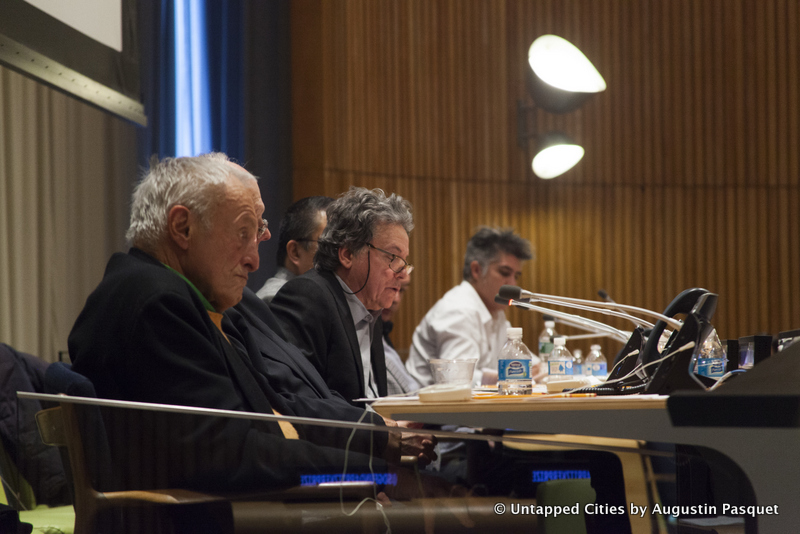 Architect Christian de Portzamparc
Architect Christian de Portzamparc
This idea of building in isolation was echoed by Chinese architect Wang Shu, who warned against the wholesale destruction of historical villages in China. There, there is a relentless push for new buildings and a more “clean environment,” but he says “‘clean’ is a dangerous word. If New York becomes very clean, New York is not New York.” He fears that the abandonment of history in China will lead to a loss of identity down the road. He also questions how you can design in a place that has eradicated its history and spoke of a museum he built in China out of the rubble of seven villages.
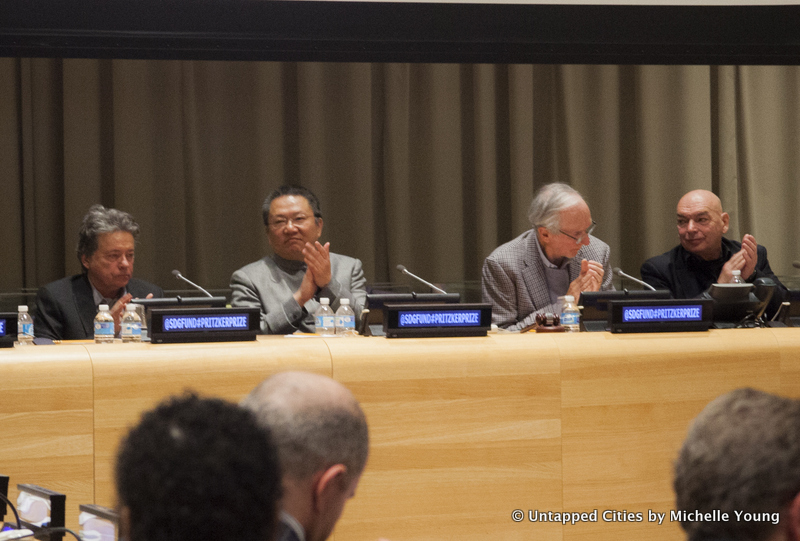 Architect Wang Shu
Architect Wang Shu
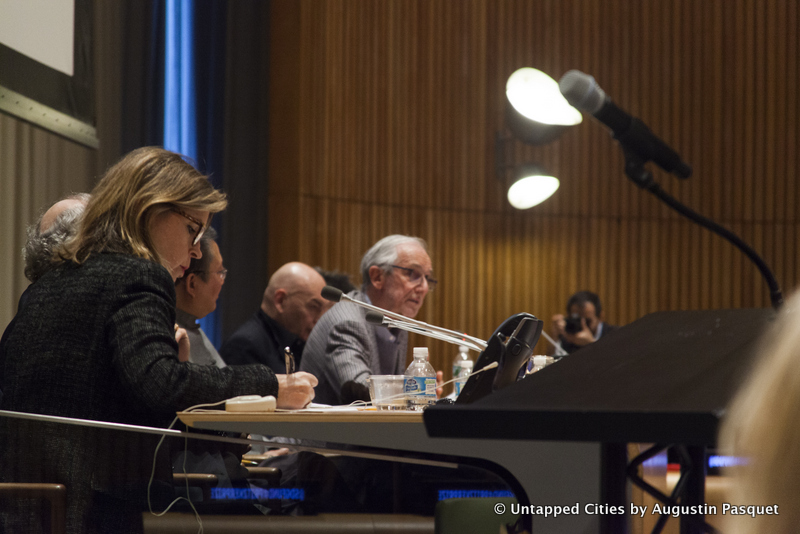 Architect Renzo Piano
Architect Renzo Piano
Nouvel spoke of the politicization and bureaucratization of architecture that has created a global system of building that is the same the world over. Everywhere, the plots of land are “always square, the square footage restricted,” and the density pre-determined. He believes architects have a “responsibility to denounce this kind of situation,” and should play a social role because it would be a “disaster to build a city without humanism or poetry.” He ends with a call to action, “I propose to fight.”
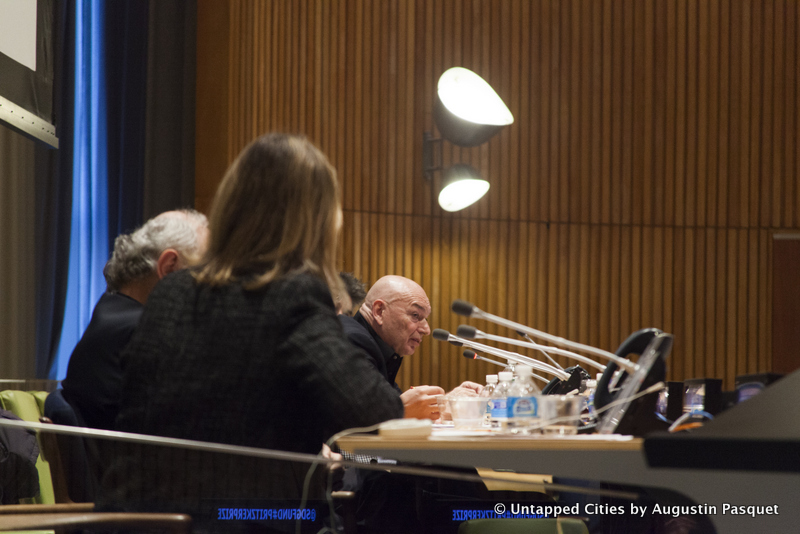 Architect Jean Nouvel
Architect Jean Nouvel
To conclude, Chilean architect Alejandro Aravena, this year’s Pritzker Prize winner, who has a history of socially-oriented architecture with the firm Elemental, gave the sobering facts. There is a migration towards the city, which is in principle a good thing, but the scale, speed and scarcity of need has “no precedent in human history.” Today, there are 3 billion people in the cities, with 1 billion under the poverty line. By 2030, there will be over 5 billion in cities, and 2 billion under the poverty line. To house this urban population increase, there would need to be a million person city built each week, Aravena contends. Aravena believes in an architecture that uses the building capacity of the people. “If you don’t have money, focus on what is the most difficult first,” and to support his call to action, he released at that very moment all the files for Elemental’s housing projects for free online.
Though the concrete solutions to the rapidly urbanizing world were less clear, the problems facing architects today resonated. Each issue had its application in cities around the world, whether here or abroad. The audience, a large part filled with architecture students, seemed to search for solutions and ways forward. At the end of the evening, it appeared it would be a continuous evolution. The main conclusion: there is not one definition of architecture anymore.
Next, read about the Top 10 Secrets of the United Nations Complex in NYC.





